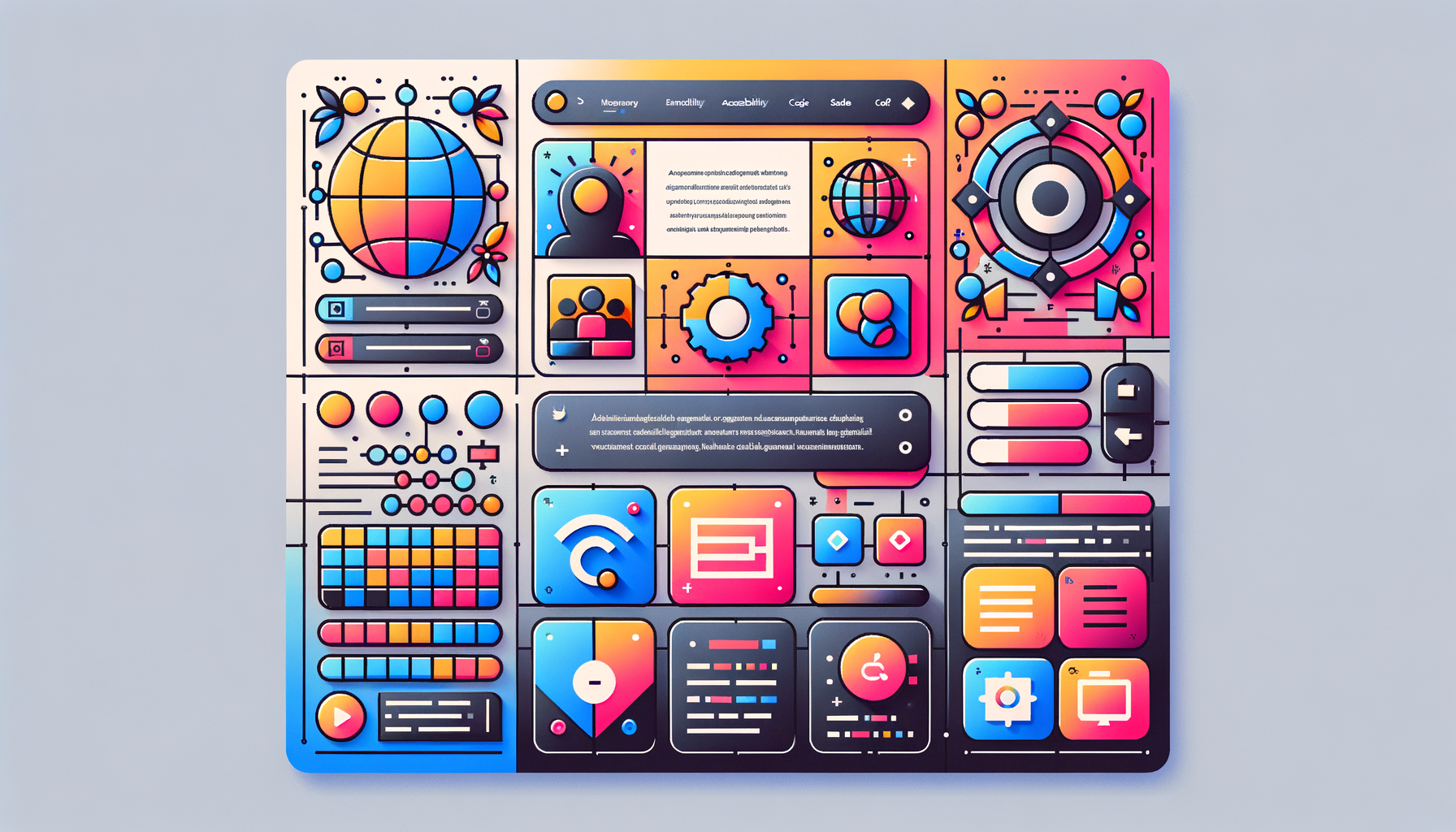
Building Inclusive Websites: The Path to WCAG Compliance
In the modern digital landscape, ensuring that your website is accessible to all users is not just a moral imperative, but also a legal and business necessity. With the increasing importance of web accessibility, it’s crucial to understand how to make your WordPress website compliant with the Web Content Accessibility Guidelines (WCAG) and the Americans with Disabilities Act (ADA). Here’s a comprehensive guide to help you achieve this goal.
Understanding WCAG and ADA Compliance
WCAG, published by the World Wide Web Consortium (W3C), sets the international standards for digital accessibility. These guidelines are divided into three levels of conformance: A, AA, and AAA, with AA being the most commonly recommended level for compliance.
The ADA, particularly Title III, requires that “places of public accommodation” be reasonably accessible for people with disabilities. While the ADA was not originally intended to include websites, recent court rulings have made it clear that websites must also comply with these standards.
Choosing the Right WordPress Theme
The foundation of an accessible WordPress website starts with the theme. Many WordPress themes are designed to meet basic WCAG accessibility requirements, but it’s essential to choose a theme that has been reviewed and approved by the WordPress Theme Review Team for accessibility. These themes are labeled as “accessibility-ready” and have been checked to ensure they pass basic accessibility requirements.
Installing ADA Compliance Plugins
One of the most effective ways to ensure your WordPress website is ADA compliant is by using specialized plugins. Here are some top-recommended plugins:
- WP Accessibility: This plugin can fix several compliance issues and add features like skip links and enforce ALT text on images.
- One Click Accessibility: Simplifies the process of making your website accessible with a single click.
- Accessibility by UserWay: Provides a comprehensive suite of tools to ensure your website meets WCAG standards.
- Web Accessibility by accessiBe: An AI-powered tool that applies the latest WCAG standards to your site by adding a line of code to the back-end.
These plugins can scan your website for accessibility issues and provide recommendations on how to fix them.
Ensuring Readable Content
Making your content readable is a critical aspect of web accessibility. Here are some key steps:
- Header Formatting: Use a logical hierarchy of headers (H1, H2, H3, etc.) to make your content easier to navigate for users with assistive technologies.
- Sentence Length: Keep sentences short and concise, ideally 7-12 words per line, to improve readability.
- Color Contrast: Ensure that the text stands out from the background by meeting the WCAG color contrast requirements. You can use tools like the WP Accessibility Plugin or online color contrast checkers to test this.
Adding ALT Text and Descriptive Elements
ALT text is crucial for users who rely on screen readers. Here’s how to ensure you’re using it correctly:
- Descriptive ALT Text: Provide accurate and descriptive ALT text for all images. This helps users understand the content of the images even if they cannot see them.
- Labeling Menus and Form Elements: Use the
<nav>element to identify menus and label each menu item clearly. For forms, label input fields, offer instructions, and define roles for various form elements.
Testing Your Website
Testing is a vital part of ensuring your website is accessible. Here are some methods to consider:
- Automated Tools: Use plugins like Siteimprove’s WordPress plugin or the WAVE web accessibility extension to scan your website for accessibility issues. These tools can identify issues such as broken links, insufficient color contrast, and missing ALT text.
- Manual Audits: Conduct manual audits using WCAG as a checklist to ensure you’re meeting ADA standards. Manual audits can provide a more thorough understanding of the user experience and help identify issues that automated tools might miss.
Leveraging AI-Powered Solutions
AI-powered tools like accessiBe and AudioEye can significantly simplify the process of achieving WCAG compliance. These tools can apply the latest WCAG standards to your site and fix many barriers as the page loads. However, it’s important to pair these tools with human judgment to ensure that all issues are accurately identified and resolved.
Ensuring Third-Party Features Are Accessible
Third-party features, such as forms and widgets, can often introduce accessibility barriers. Here’s how to ensure they remain accessible:
- WCAG Compliant Forms: If you use Gravity Forms, download WCAG 2.0 form fields to make your forms compliant.
- Theme-Specific Solutions: If you use a theme like Divi, install Divi Accessibility to fix some of the theme’s accessibility shortcomings.
Continuous Monitoring and Improvement
Accessibility is not a one-time task; it requires continuous monitoring and improvement. Here are some steps to ensure ongoing compliance:
- Regular Audits: Regularly run automated and manual audits to identify and fix new accessibility issues.
- User Feedback: Encourage user feedback and use it to improve the accessibility of your website.
- Stay Updated: Keep your WordPress core, themes, and plugins updated to ensure you benefit from the latest accessibility improvements.
Conclusion and Next Steps
Creating an accessible WordPress website is a multifaceted process that involves choosing the right theme, installing ADA compliance plugins, ensuring readable content, and continuous monitoring. By following these steps and leveraging tools like those from Kinsta for hosting and various accessibility plugins, you can ensure your website is inclusive and compliant with WCAG and ADA standards.
If you need further assistance or a comprehensive audit of your website’s accessibility, Contact Us at Belov Digital Agency. Our team of experts is ready to help you build an accessible and user-friendly website.
Additional Resources
- WordPress Accessibility Handbook: A comprehensive guide to best practices for web accessibility and tools for testing and improving WordPress accessibility.
- Siteimprove Intelligence Platform: Integrates with your WordPress website to scan for accessibility issues and provide real-time recommendations for fixes.
- AudioEye’s Digital Accessibility Platform: Combines AI-powered tests with access to certified experts to help build towards compliance.
By prioritizing web accessibility, you not only comply with legal requirements but also enhance the user experience for all visitors, making your website more inclusive and effective.













